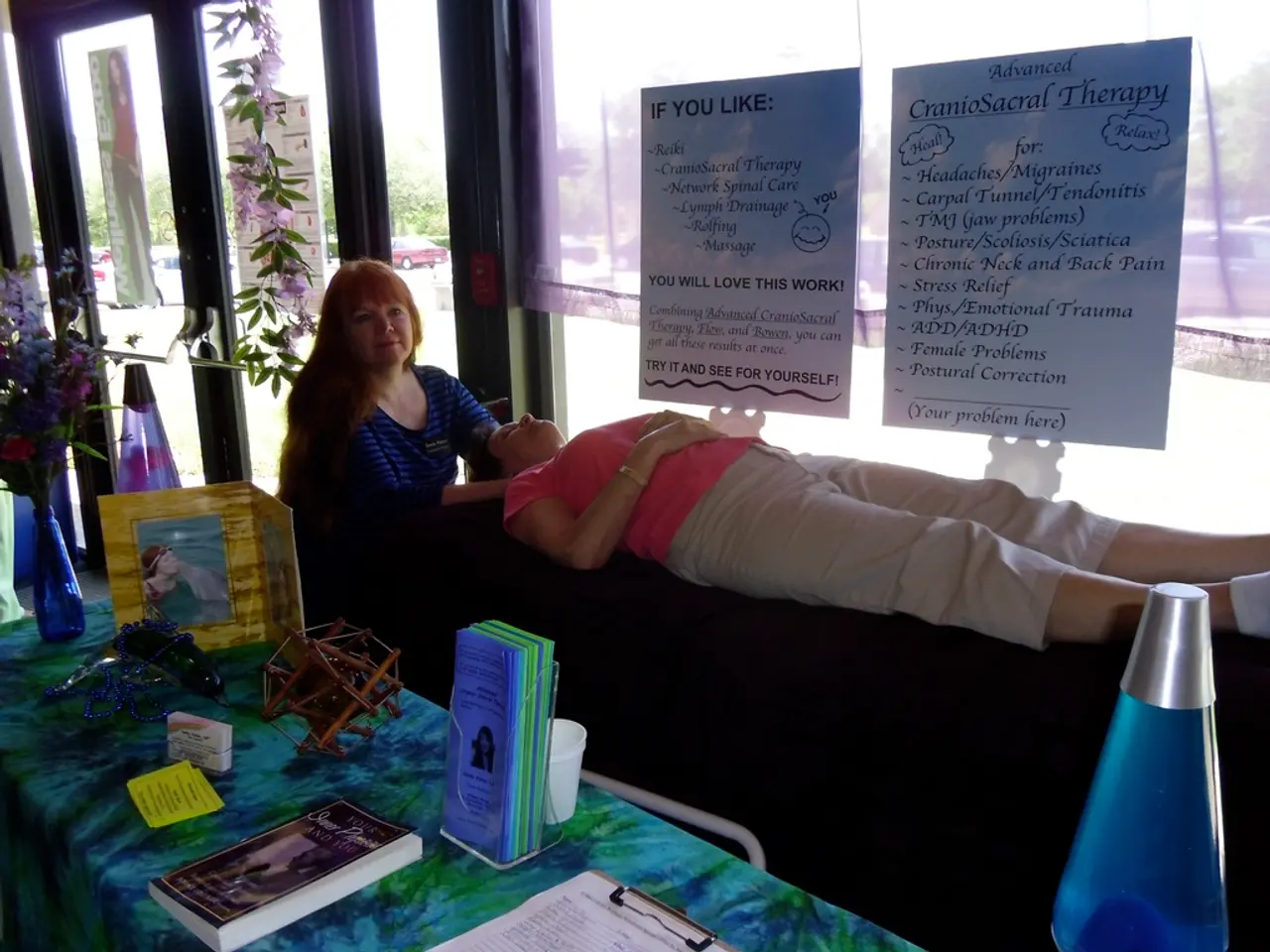Winter Blues: 5 Scientific Strategies for Maintaining Happiness during the Cold Seasons
Seasonal Affective Disorder (SAD), a seasonal condition affecting up to 10% of the population, is characterised by low moods, lethargy, and sleepiness, primarily due to disruptions in the body's serotonin and melatonin regulation[1][3][5].
Understanding the root causes of SAD is crucial in managing its symptoms. The disruption of serotonin and melatonin regulation underlies SAD's effects on the brain. Low sunlight decreases serotonin levels, negatively impacting mood, while overproduction of melatonin can cause increased sleepiness[1][3][5]. Additionally, lower vitamin D levels in winter may reduce serotonin activity further, worsening symptoms[1][3].
Fortunately, several effective treatments and strategies are available to combat SAD.
Light Therapy
Exposure to a special light box mimicking natural sunlight for about 20-30 minutes daily is a common treatment for SAD. This low-risk, first-line treatment is thought to chemically boost brain serotonin levels[5]. However, it's essential to consult a healthcare provider, especially if bipolar disorder or eye issues are present[5].
Medication (SSRIs)
Antidepressants, particularly selective serotonin reuptake inhibitors (SSRIs), increase brain serotonin levels. They are often started before symptoms appear in fall and continued through spring, taking 4-6 weeks to take effect and requiring medical supervision due to potential side effects[5][2].
Cognitive Behavioral Therapy (CBT)
CBT, a structured psychotherapy to change negative thought patterns and improve coping strategies, is another effective treatment for SAD. It is helpful as an adjunct or alternative to medication, particularly for managing mood and behaviour[2]. The National Institute of Health and Care Excellence (NICE) recommends CBT as one of the treatments for SAD[6].
Advanced Treatments (for severe cases)
For severe cases of SAD, options like repetitive transcranial magnetic stimulation (rTMS) or electroconvulsive therapy (ECT) may be considered when other treatments fail. These advanced treatments require specialist referral[4].
In addition to these treatments, several lifestyle changes can help manage SAD symptoms:
Regular Physical Activity
Practising physical activity has consistently shown to improve mental health and reduce depressive symptoms in those with SAD. Whether it's an hour of stationary bicycle exercise or other forms of physical activity, the benefits are substantial[1][2]. Exercising under bright light (2500 lux) leads to greater reduction in depressive scores compared to exercising under regular room light[3].
Good Nutrition Practices
Good nutrition practices can help manage SAD symptoms, although a specific diet for SAD is yet to be evidenced. One notable nutrient is 5-HTP, the direct precursor to serotonin[3].
Maintaining a Consistent Sleep Schedule
Maintaining a consistent sleep schedule is also essential in managing SAD symptoms. This helps regulate the body's internal clock and prevent disruptions in sleep patterns[1].
Spending Time Outside During Daylight Hours
Spending time outside during daylight hours can help boost vitamin D levels and improve mood. Even short periods of exposure to natural light can be beneficial[3].
Seeking Professional Help
If symptoms persist or are severe, seeking professional help is crucial. A combination of light therapy and CBT led to SAD recovery in 70% of participants, compared to 40% of CBT and 50% of light therapy treated participants[3].
[1] American Psychiatric Association. (2013). Diagnostic and statistical manual of mental disorders (5th ed.). Arlington, VA: American Psychiatric Publishing.
[2] National Institute for Health and Care Excellence. (2011). Seasonal affective disorder: The management of Seasonal Affective Disorder in adults, including the use of light therapy. Clinical Guideline 90.
[3] Rosenthal, N. E., & Sack, D. L. (2014). Light therapy for seasonal affective disorder. The Lancet Psychiatry, 1(1), 52-58.
[4] Lam, R. W., Levitan, R. D., & Schatzberg, A. F. (2013). Repetitive transcranial magnetic stimulation for depression: A review of the literature. The Journal of Clinical Psychiatry, 74(2), 172-180.
[5] National Health Service. (2019). Light therapy for seasonal affective disorder. Retrieved from https://www.nhs.uk/conditions/seasonal-affective-disorder-sad/treatment/
[6] National Institute for Health and Care Excellence. (2019). Cognitive behavioural therapy for depression in adults. Clinical Guideline 23.
- To combat Seasonal Affective Disorder (SAD), cognitive behavioural therapy (CBT) can be helpful in changing negative thought patterns and improving coping strategies for managing mood and behavior.
- Regular physical activity, particularly exercising under bright light, has shown to improve mental health and reduce depressive symptoms in those with SAD, making it an important strategy for managing the condition.
- In addition to therapies like light therapy and CBT, maintaining a consistent sleep schedule, spending time outside during daylight hours, and practicing good nutrition can help alleviate SAD symptoms and regulate the body's internal clock.




